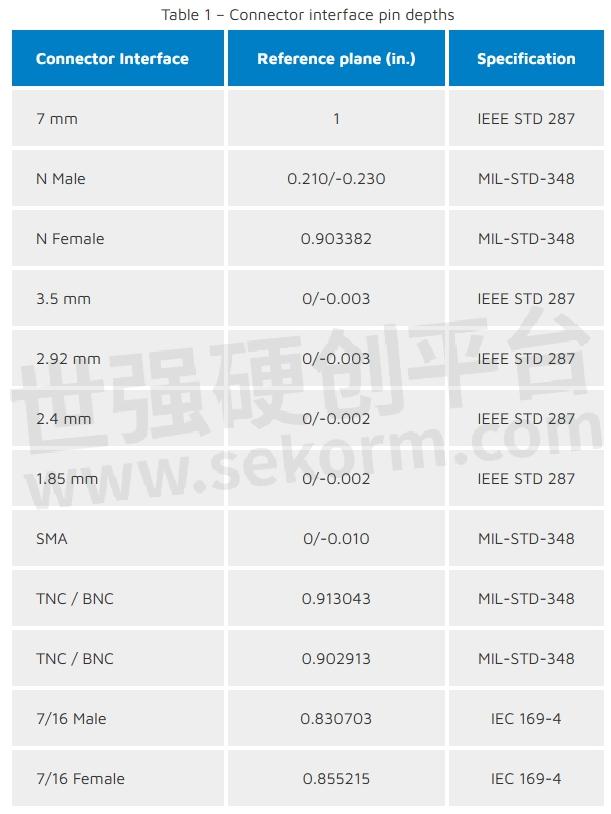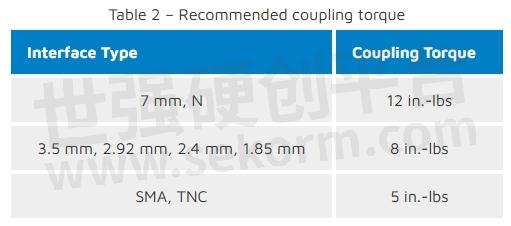Mission Critical: Maintain your RF cables and connectors 24 APR Mission Critical: Maintain your RF cables and connectors

Like most nice things, proper upkeep and handling is standard practice, Radio Frequency (RF) cables and Connectors are no exception. The RF signal which is transmitted between an (or between transmitter and antenna) can be compromised if the cables or connectors are not upheld. One of the easiest ways to receive the best performance for transmitting signals is to regularly maintain RF components.
Annual upkeep of RF cables and connectors will extend the lifespan, increase efficiency, minimize RF insertion loss, and limit gaps in transmission signals. Prolong RF cables and connectors live and produce more accurate and repeatable measurements by following these guidelines.
Connector Interfaces:
Interface Cleanliness - Clean interfaces prolong connector life and produce more accurate, repeatable measurements. Use connector endcaps to protect the cables and adapters when not in use (no passive voice).
Interface Cleaning Procedure:
Solvents: Connector Insulators, support beads, and seals are susceptible to solvent damage. Solvents can produce permanent physical and electrical damage. Isopropyl Alcohol is recommended for cleaning interfaces. It should be noted that connector interfaces should not be immersed in solvents of any kind because solvents can become trapped within the connectorized assembly. Trapped fluids can cause SWR, Phase, and Insertion Loss problems.
Applicators: Fibrous or Abrasive applicators can contaminate and even damage Interface surfaces. Clean lint-free swabs should be used. They need to be sharp enough and hard enough to remove dirt and debris without damaging surfaces and/or dislodging center pins.
Method: Dip a clean lint-free swab in clean isopropyl alcohol. Press excess alcohol out of the swab on a clean lint-free towel. Wipe the interface components as required to clean the interface. Blow-dry the interface with clean compressed air. Re-inspect the connector to verify that the interface is clean and ready for additional inspection procedures and interface gauging prior to use.
Interface Gauging: Incorrect center pin depths can produce inaccurate measurements and in the case of protruding cent pins can damage test devices, adapters, and test ports. Frequent Interface gauging can detect problems before they can ruin mating devices (see Table 1 for connector interface pin depths).

Recommended Coupling Torque:
Incorrect torque can produce inaccurate measurements and over-torque coupling can damage test devices, adapters, and test ports. Torque wrenches should be utilized to for all mate/de-mate processes (see Table 2 for recommended coupling torque values).

Cable Routing:
Bend radius - Care should be taken to avoid over-bending test cables beyond minimum bend radius guidelines. Over-bending can force the cable center conductor off-center and can force the outer
conductor out of round even to the point of kinking and fracture. Overbending results in degraded IL and SWR performance. It should also be noted that coiling cables at small diameters could force connector center pins to protrude beyond the required interface dimensions.
Twisting - Twisting test cables should be always avoided. Excessive twists can damage Cable assembly at the cable/connector junction or even mid-cable depending on how the twist is applied. Lower-level twists can cause measurement problems as well. Inducted stresses on test ports and device ports can damage the ports. Low-level stresses can cause connections to loosen up. When routing cables always connect any right angles first.
Cable assembly mate/de-mate process:
Interface alignment - Contact pins and dielectrics can be damaged if misaligned connectors are mated. Make sure that mating interfaces are parallel and on the center during the mate/de-mate cycle.
Interface Rotation - The plating and surface finish of outer and inner contacts can be damaged if connector bodies are allowed to rotate during the mate/de-mate cycle. Use wrench flats on connector bodies to keep them rotationally stationary while rotating the coupling nut during mate/de-mate.
Minimized load configuration - Allow the test cable to assume a natural bend configuration route between the test port and the device port. Loosen test port and device port connection when test configuration is largely different than test configuration. Route cable, connect device port loosely then tighten port connections to recommended coupling torque (see Table 2 above). This method will minimize most bend and twist loading issues.
Mission-critical systems are exposed to different harsh environments, high levels of radiation, intense heat, extreme cold, strong wind, heavy rain, or snow, and extreme vibration. Providing a high-quality RF/microwave transmit signal is crucial for all mission-critical RF electrical systems.
Equipment failure or malfunction can be prevented with proper maintenance, establishing default measurements, and understanding application use and conditions. Annual upkeep and maintenance for RF components will extend the lifespan, increase efficiency, minimize RF insertion loss, and limit gaps in transmission signals.
- +1 Like
- Add to Favorites
Recommend
This document is provided by Sekorm Platform for VIP exclusive service. The copyright is owned by Sekorm. Without authorization, any medias, websites or individual are not allowed to reprint. When authorizing the reprint, the link of www.sekorm.com must be indicated.


























































































































































































































































































































































































































































































































































































































































































































































































































































































































